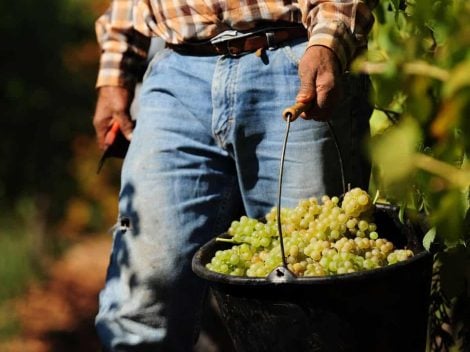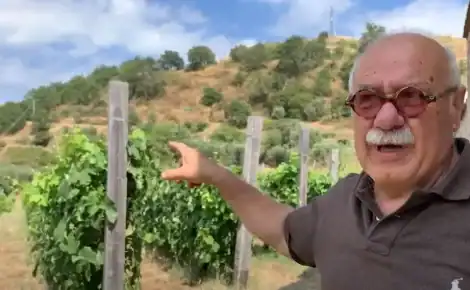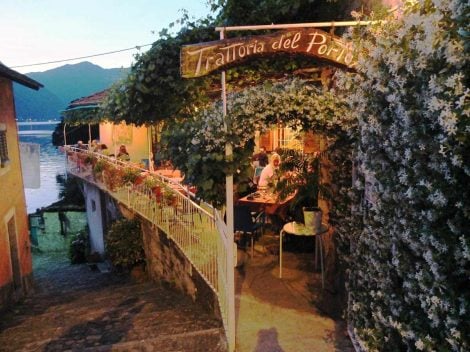From Sicilian tea to Kombucha, passing through lavender, Shiitake mushrooms, Irmana rye, and truffles. And then coffee, saffron, agave, sugar cane, and rice. “Unusual” Sicilian products and crops, unexpected in the largest island in the Mediterranean but discovered to have deep and ancient roots. While the tropical Sicilian cultivations of avocado and mango are now a full part of the region’s production, the island today rediscovers some ingredients and emerges as fertile ground for new products. Don't call it solely the "climate change effect." Behind it are stories of small growers and the rediscovery of crops that have found a good home in Sicily, thanks to the extraordinary biodiversity and variety of this land.
Shiitake Mushrooms, the Super Food from the Far East, Now Cultivated at the Foot of Mt Etna
Inspired by biology and sustainability, Basilio Busà transformed his farm into a mycology laboratory. Fascinated by the Asian Shiitake mushrooms, a true superfood with nutraceutical properties and a boosting effect on our immune system, he became the first in Europe to grow the mushroom of the Far East on chestnut wood chips from Mt Etna, remaining faithful to the Asian tradition where Shiitake grows naturally on dead wood of oak or chestnut species.
We are in Trecastagni, a town at the foot of Mt Etna, one of the highest towns on the tallest active volcano in Europe. It's here that Basilio Busà's company was born, inside the Etna Park. His Shiitake mushrooms belong to the Donko variety, the most prized and tasty, with a three-month life cycle and a constant production of 30-40 kg per month destined for small direct retail channels or restaurants that recognise the peculiarities of this mushroom, including macrobiotic restaurants.
Of the three phases of the mushroom's life cycle, the first begins in the laboratory where the mycelium feeds on chestnut wood in a bag, then completes the cycle in a lava flow cave with natural ventilation capable of stabilising the temperature.
The allure of research pushes Busà to experiment with the many lives of a chestnut tree by adopting a vision of circular economy. From the residual chips of mushroom production, he created biobricks for beehives and, recently, even prototypes of mini wind turbines. In December, the first Etna chestnut flour will also be certified, born from the transformation of coppices.
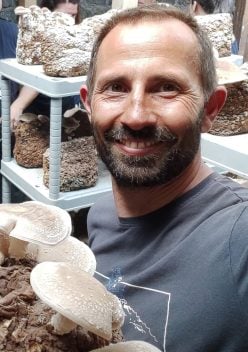
Fermented Foods Craze: From the Conza Food Lab to Selvatica Lab, Sicily Is in Full Fermentation
It's the Nordic vein of the food lab and fermented products that inspires the people from the Conza Food Lab. The root remains deeply Sicilian, anchored in the Enna Sicilian hinterland. Giovanni Puglisi and Angelo Manna, founding partners, started with the idea of making BBQ sauces with Sicilian products. While the original project evolved, the group also grew, now counting seven partners.
The very young start-up has just entered the market with two versions of artisanal kombucha (classic and flavoured with Sicilian verdelho), fruit vinegars produced by the traditional method from agricultural ingredients of the territory (blood oranges, apricots, Leonforte peaches, prickly pears), a flavoured salt, and two BBQ sauces (bell peppers and quince, datterino tomato).
There's no denying that there is literally a ferment for kombucha production. Kombucha, the fermented tea originating from the Far East, becomes Sicilian thanks to Conza Food Lab using medicinal plants, fruits, and aromatic herbs from the territory. Two new flavours are ready at the starting line: mint and wild thyme, and the use of tea produced in Sicily is also under experimentation. The magic of fermentation also captivates the couple Marco Pilato and Lenor Corrales Retana, he a Sicilian engineer who has lived several years outside Sicily, she an agronomist and food technologist originally from Costa Rica.
Selvatica Lab is a laboratory of creative and experimental fermentation that has found a physical and ideological home at the Bagolaro farm, at the foot of Mt Etna. In addition to lacto-fermented vegetables, Marco and Lenor are investing a lot in the production of kombucha, already on the market with four varieties and two new lines on the way. Precious teas such as hassam satrupa black tea or Chinese white tea meet Sicilian aromatic and spontaneous herbs. Not just a simple fermented beverage, their kombucha, besides representing Sicilian territory, has the complexity of ancestral wine, sharing the same bottle re-fermentation process.
Sicilian Made in Sicily Tea from Le Perle dell'Orto
The tea, proudly and rigorously Made in Sicily, grows in Pietraperzia, a small centre in Enna, on sandy soil and thrives in a warm climate with plenty of water. The bidens aurea plants, a variety originally from Central America but now adopted in Sicily, are cultivated by Salvatore Bellanti in his Le Perle dell'Orto agricultural company, continuing the tradition of his grandfather. With an amber colour and a delicate flavour, it resembles classic Chinese green tea but is caffeine-free and is obtained solely from leaf drying without roasting. Bellanti began marketing it in 2015 with direct sales in farmer's markets, aiming today to expand his commercial network.
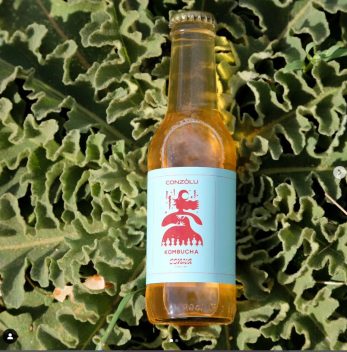
Avola Is Not Only Known for Almonds: Rediscovering Sugar Cane in Agricultural Rum
Known worldwide for its almonds, the town of Avola was one of the most important sugarcane cultivation centres, introduced by the Arabs in the 1800s. From the 1400s to the 1600s, Sicily held the natural and technological monopoly of sugar cane production throughout Europe, exporting to the United Kingdom, the Netherlands, France, and Germany. It was the Spanish domination that introduced rum production in Sicily, already at the end of the 17th century, started at the same time as in the Spanish Caribbean colonies. Numerous literary traces, from the travellers of the Grand Tour to the pages of The Leopard. With this background and tradition, Corrado Bellia resumed cultivation, and in 2021 made his debut with Avola Rum, an artisanal rum produced using agricultural methods by pressing, fermenting, and distilling the sugar cane juice he grows in Avola.
Sicily and Clouds, the Sicilian Aztec Landscape of Agave Cultivation
The Aztecs called it the "tree of wonders," while for Sicilians, it's the zammara or zabbara. The cultivation of agave finds perfect hospitality in some areas of Sicily with a dry and arid climate. The presence of this plant dates back to the Greek era, but its cultivation has played an important role since the early 1900s in Acquedolci, a small Sicilian town that boasted extensive agave cultivation as a raw material used for textiles. The potential of agave cultivation in Sicily was realised by Agalìa, a start-up created by four partners who resumed agave cultivation in the Messina province and created the first agave distillate enriched with local botanicals.
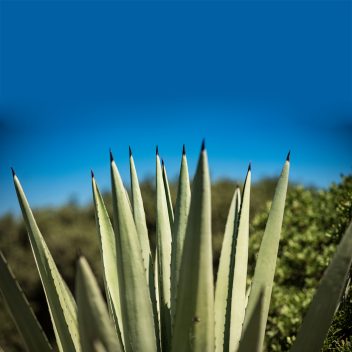
Sicilian Lavender, a Corner of Provence on the Island
Like a painting by Van Gogh or Cézanne, one can see a corner of Provence in this Sicilian area where purple-blue flowers spread across the landscape amidst the yellow of wheat and the green of olive trees. It's the landscape of Sicilian lavender, the only one produced in Sicily by Giovanni D'Anca and Luisa Montalto with their company Lavanda di Sicilia - Le Antiche Tradizioni, where they also produce organic pasta, flour, and olive oil.
The three cultivated hectares lie on the gentle slopes of the hills of Santa Caterina di Villarmosa, in the province of Caltanissetta, in the heart of the Sicilian hinterland. From this aromatic plant that evokes memories of a grandmother's fragrant drawers, the Sicilian company produces dried and fresh bouquets, essential oils, scented water, solid and liquid soap made with extra virgin olive oil, lavender-flavoured bakery products (breadsticks, donuts, shortbread, nougat).
Sicily Discovers Its Red Gold
Another story of current day Sicily rediscovering its ancient roots. This is the case of saffron cultivation. Dubbed the "red gold," it finds its natural habitat in the city of Enna and its province. In 2007, the "Oro Rosso di Sicilia" cooperative was born, bringing together twelve Sicilian farming entrepreneurs driven by the passion to reintroduce a crop already present in the territory since antiquity. In addition to being used in the production of the typical PDO cheese "Piacentinu ennese," Enna saffron is marketed unground and left in whole stigmas to preserve quality.
Irmana Rye Renaissance: The Second Life of the Indigenous Grain once a Symbol of Resistance
In Nicolosi, on the southern slope of Europe's tallest volcano, Andrea Serafica recovered half a kilo of Irmana rye seed from a farmer, an indigenous Sicilian variety that Benedictine monks cultivated until after World War II. His project to restore the cultivation of this Sicilian indigenous grain received support from the Etna Park, the University of Catania, and the municipality of Nicolosi. Thus began the second life of Irmana rye, whose name indicates its original origin from Germany, a country from which it was imported centuries ago. It is a resilient variety that adapts better than other cereals to significant altitudes, with low glycemic content, rich in minerals, and with a significant need for hydration during its milling. The Serafica company, custodian of this precious grain, is the only one cultivating five hectares of Irmana rye, at an altitude of almost one thousand metres.
The sowing of Irmana rye, from December to January, is delayed compared to traditional grains, with harvesting in July, beyond the usual season. From Irmana rye comes the black bread of Immanu, which has obtained the collective mark De.C.O., Denomination of Communal Origin. Dark in colour and with a pronounced sweetness, it is included in the registry of the Municipality of Nicolosi for the protection and enhancement of local products. There are still very few bakeries that use pure Irmana rye flour produced by the Serafica company. Among these are the Biancuccia bakery in Catania, the Laudani bakery in Nicolosi, and Tommaso Cannata in Messina. Today, after recovery and cultivation, Serafica's goal is to promote Irmana rye as an ambassador of the territory and to enhance the project through bakeries that have adopted the processing of this grain.
Once upon a time, there was Sicily, the rice paddy of the Mediterranean
It is only an apparent paradox to think of Sicily, often a dry land, as a place where rice can be grown. Yet, the island was once a vast rice field, until the Unification of Italy. Even earlier, rice was mentioned by Diodorus Siculus from Egira (60-30 BC) and was introduced by the Arabs during their domination that began in 875 AD. Then, political reasons and the difficulties in transformation overshadowed rice cultivation.
We had to wait until 2009 for the rebirth of Sicilian rice cultivation thanks to Giuseppe Manna, who decided to create a rice field in the Leonforte area, in the province of Enna. Sebastiano Conti, on the other hand, deserves credit for betting on organic rice and starting the first Made in Sicily rice production.
In Lentini, in the province of Syracuse, in the so-called Piana di Catania, Conti started a first experimental project in 2016 with the University of Etna's capital. From the initial six hectares to the current 150, the Agribio Conti company cultivates different varieties: Carnaroli, Arborio, Selenio, the long-grain Ribe, red and black integral rice varieties. An entirely organic product appreciated even in the north. The innovation lies in the cultivation method, which efficiently manages the problem of scarce precipitation in Sicily.
It's called the "dry method," and it allows the fields to be arranged in a slight slope so that water flows from above onto the entire terrain, avoiding the typical flooding of northern lands and resulting in a 40% water saving.
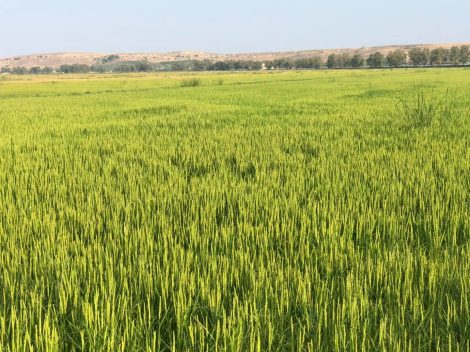
Truffle-Mania. Sicily in Search of Its White Alba Truffle
Known since the time of the Greeks, the Sicilian truffle was discovered by Giuseppe Insegna in a vase at the Palermo botanical garden in 1874. Mentioned in The Leopard as a dish, Timballo, and Truffle, in Sicily, there are abundant Bianchetto, Scorzone, and Uncinato truffles. The prices of Sicilian truffles fluctuate and depend on the size. They range from 300 euros per kg up to 900 euros for the Uncinato truffle.
This fungal species grows in the wooded areas of Madonie, Nebrodi, and Monti Sicani, avoiding water stagnation and preferring particularly calcareous soil with a pH between 7 and 8. Not only wild, but truffles can also be cultivated in truffle fields, i.e., plots of land where mycorrhizal plants are implanted. There are several of these in the island: from the "I Tartufi di Montalbano" company in Burgio, Agrigento, to "Tartufo Siciliano" in Barrafranca, Enna. With three truffle cities (Castelbuono, Capizzi, Burgio), Sicily has all the potential to become Italy's truffle region. However, first, truffle farming needs to be defined organically through the upcoming mapping of truffle fields and the imminent publication of the 2020 regional regulation governing the "collection, cultivation, trade, and protection of truffles.
The Sicilian Coffee Belt: Born in Sicily Coffee is already a reality
Talking about coffee cultivation in Sicily is no longer a taboo. This reality owes itself to the influence of climate change, dreams, a daring bet, and the determination of pioneers like Arturo Morettino. Thirty years ago, the Palermo entrepreneur started the first experiment in the gardens of his family's historic roastery, planting around sixty Coffea Arabica plants, born from seeds donated in the 1990s by the Botanical Garden of Palermo. From the initial 30 kg in 2021, Morettino, by the end of 2023, counts around 70 kg.
Alongside the original spontaneous Heirloom variety, the Morettino family has introduced other varieties over time, such as Bourbon or Catuai from Guatemala, and Caturra and Pacamara from Peru. Born in Sicily coffee carries the scent of Sicily itself: from hints of Zibibbo grape and carob to the sweet aromas of white pomelia flowers and panela sugar. Rosolino Palazzolo, a young farmer who likes to call himself a "futurist," also invests in coffee. In his "Orto di Rosolino" in Terrasini, amidst tropical cultivations of mangoes, papayas, and avocados, there's a small coffee plantation, focusing on the Caturra variety. In total, there are 50 kg that will be sold as genuine coffee to specialised roasters focusing on single-origin coffee.
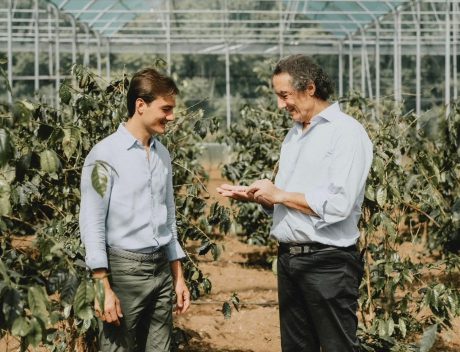
After wine, it's time for Etna volcanic vinegar
The second phase of the production of organic volcanic vinegar from Mount Etna is underway. This project, funded by the PSR Sicily, involves the University of Catania and four wineries cultivating typical Etna grape varieties: Nerello Mascalese, Nerello Cappuccio, and Carricante. The first batches of product harvested last year have already undergone sensory analysis and are currently maturing, while the grape harvest has just begun to initiate the process of acetification of the must obtained according to high-quality standards.
One of the objectives of the ACE.VÙ project is to use grapes that grow in pedoclimatic conditions and volcanic substrates at altitude, rich in acids and minerals. The organic vinegar from Etna will be volcanic, aiming to be a full expression of the territory and its characteristics: from scents of broom, chestnut, to cherry.
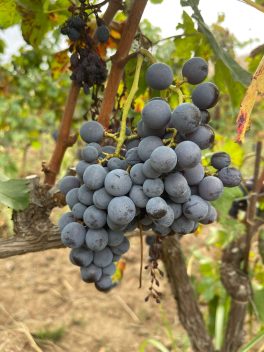

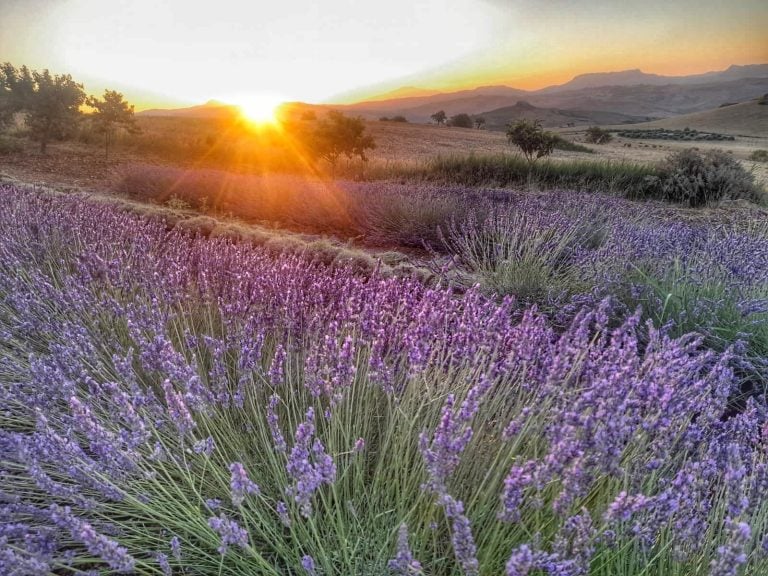
 Diego Rossi of Trippa opens a new osteria: what you can eat at Nino Osteria con Cucina in Milan
Diego Rossi of Trippa opens a new osteria: what you can eat at Nino Osteria con Cucina in Milan How you eat at Sentiero, the restaurant Elba Island was missing
How you eat at Sentiero, the restaurant Elba Island was missing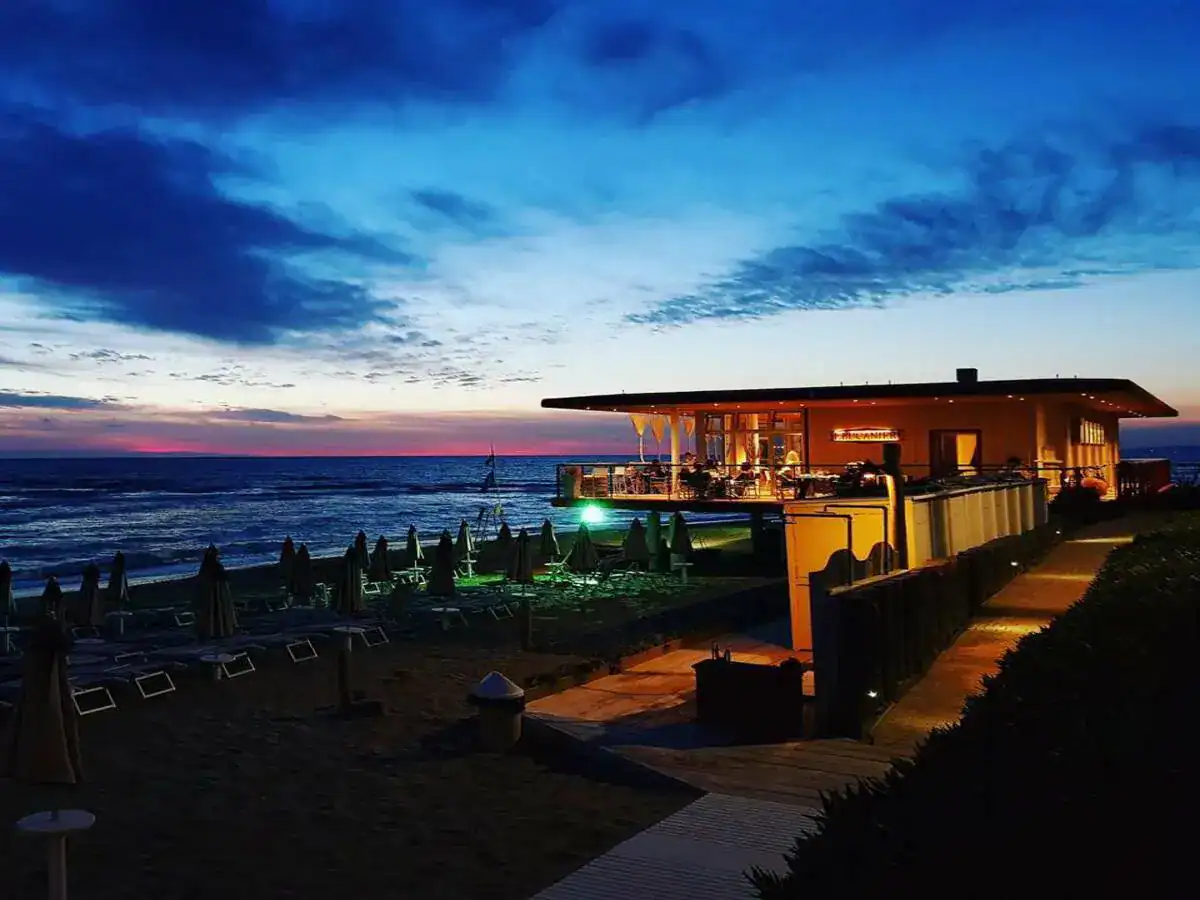 Eating by the sea in Tuscany. The best beachfront restaurants selected by Gambero Rosso
Eating by the sea in Tuscany. The best beachfront restaurants selected by Gambero Rosso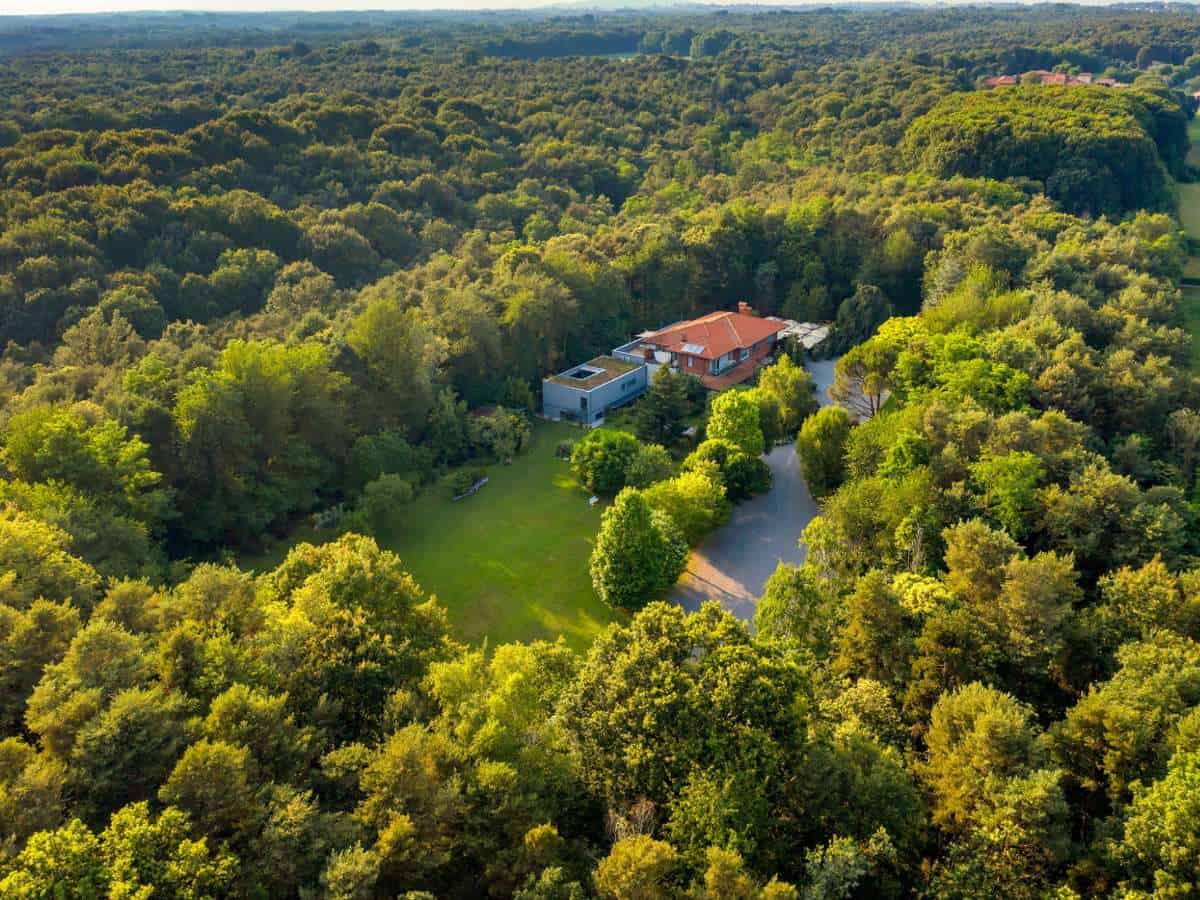 Contemporary cuisine, farmhouses and pinewoods. The hidden restaurant in the nature park near Como
Contemporary cuisine, farmhouses and pinewoods. The hidden restaurant in the nature park near Como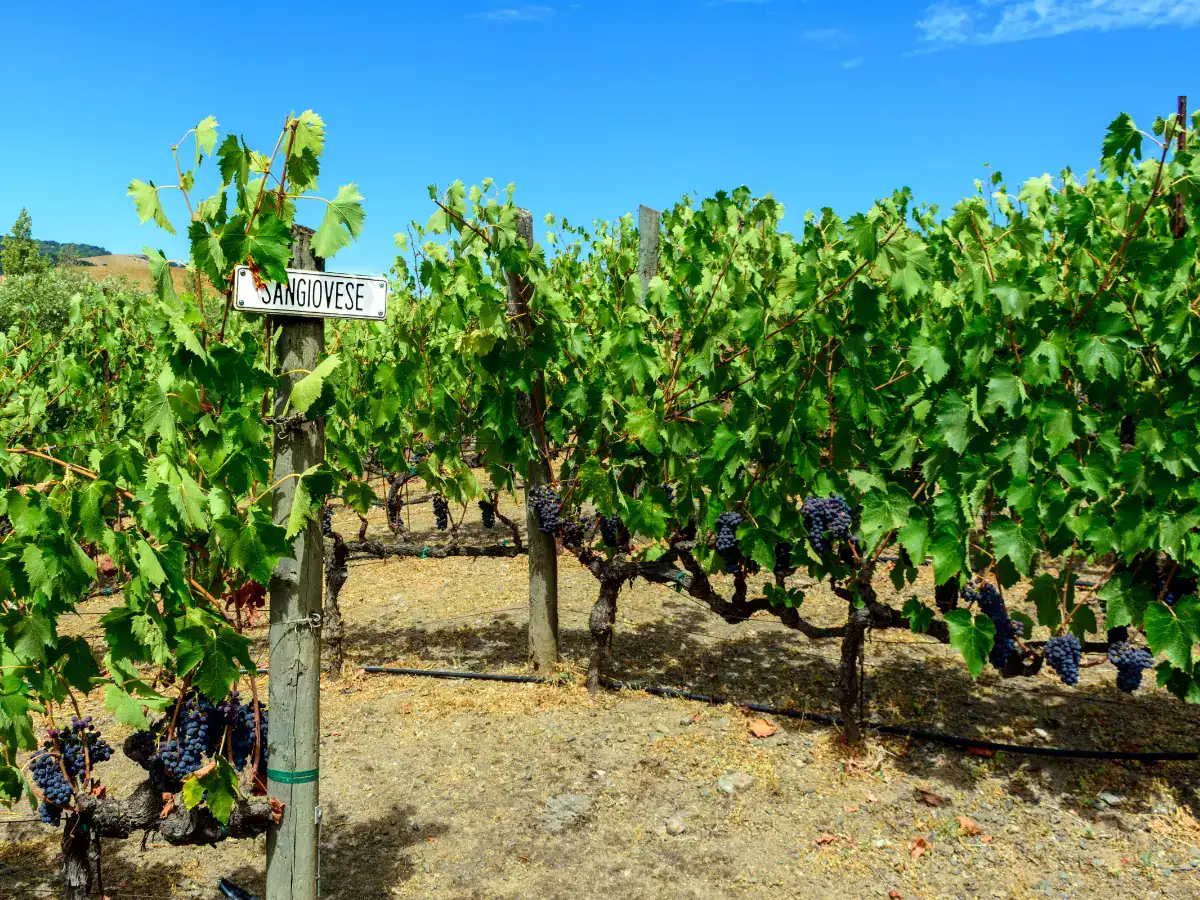 California rediscovers Sangiovese. A brief history of the revival of a forgotten grape variety in the United States
California rediscovers Sangiovese. A brief history of the revival of a forgotten grape variety in the United States


